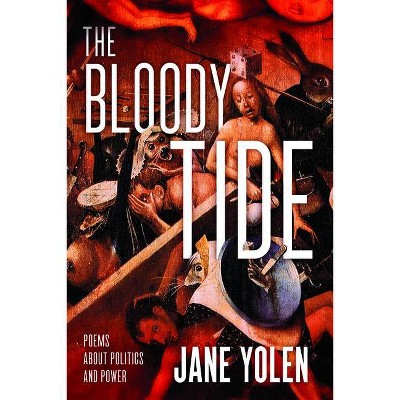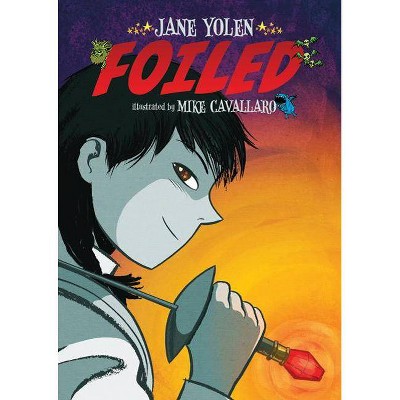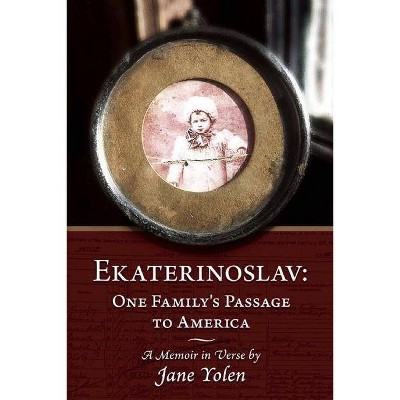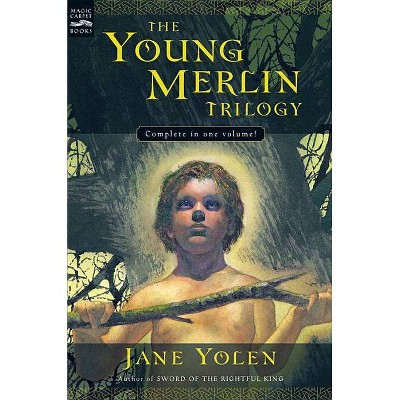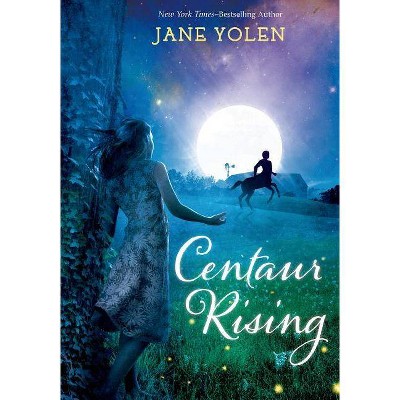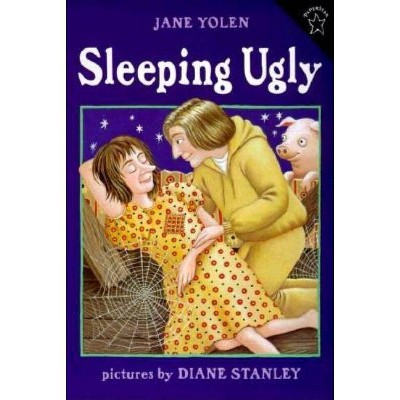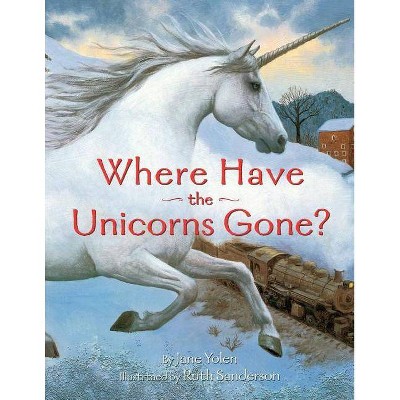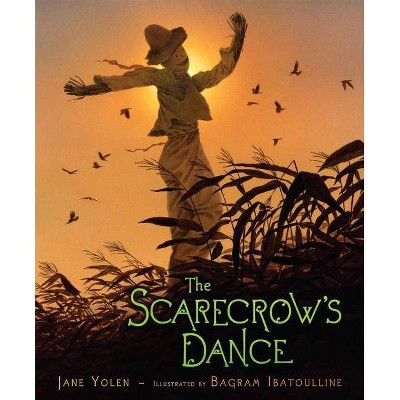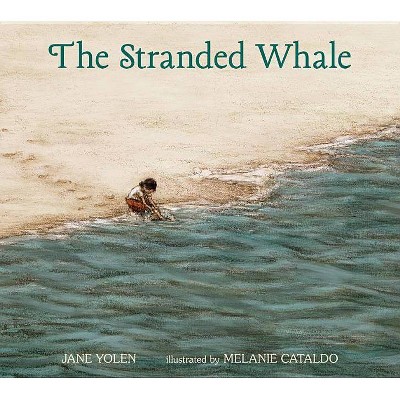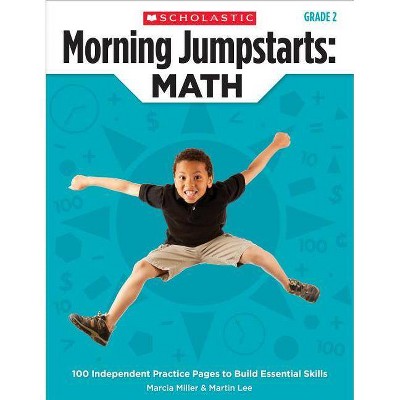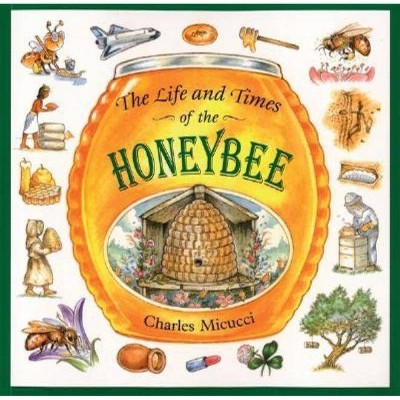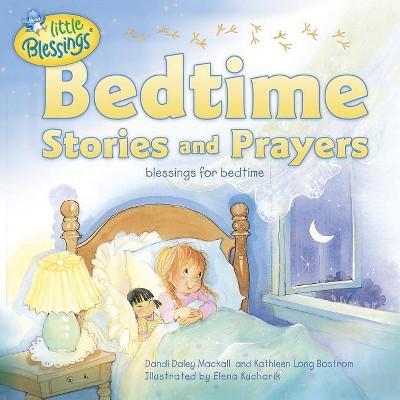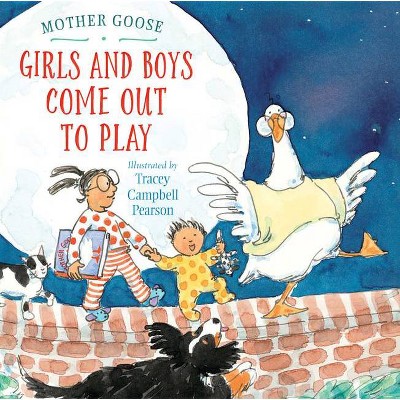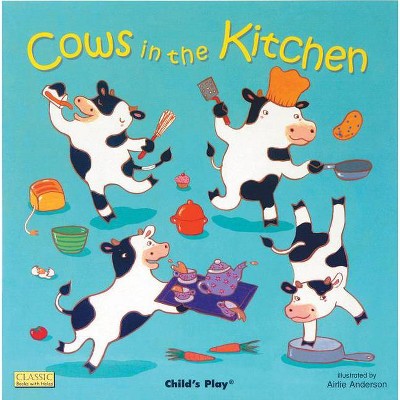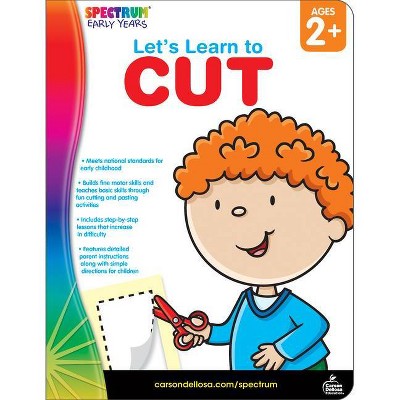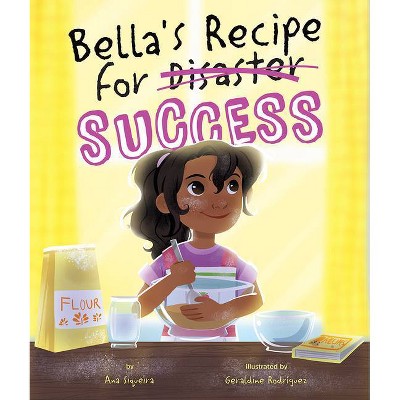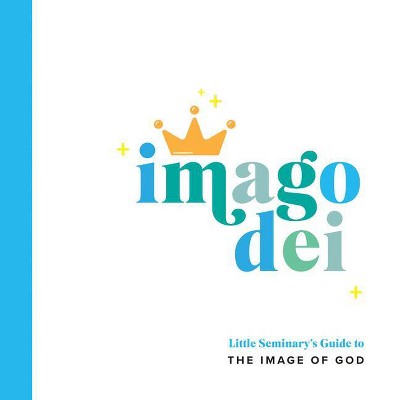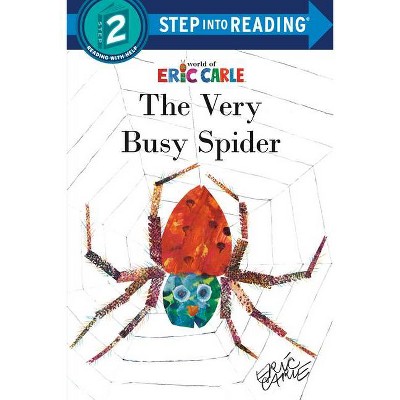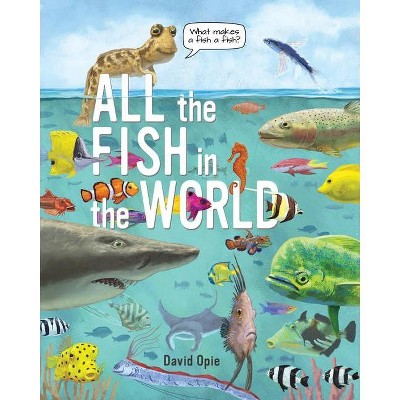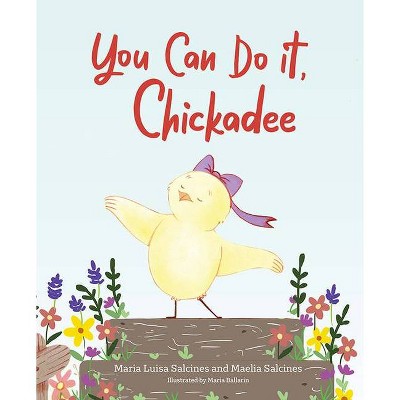Miriam at the River - by Jane Yolen (Paperback)
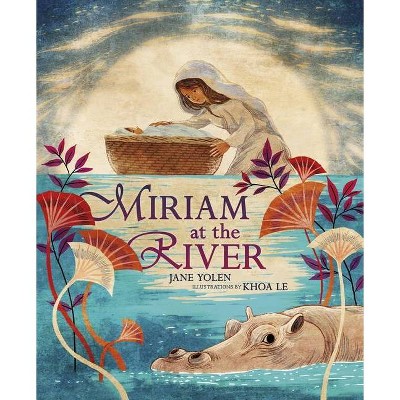
Similar Products
Products of same category from the store
AllProduct info
<p/><br></br><p><b> About the Book </b></p></br></br>Seven-year-old Miriam places her baby brother's basket in the Nile River, watches the Pharoah's daughter draw him out and name him Moses, and ponders a vision of other water parting. Includes note on the biblical story on which this is based.<p/><br></br><p><b> Book Synopsis </b></p></br></br><p><strong>The biblical story of baby Moses as told by his big sister.</strong><br /> <br /> Giving her baby brother a kiss, brave little Miriam places Moses's basket into the river. With one quick push, she sends him into the water, hoping her wish will come true and her brother will be saved from Pharaoh's orders. But will Pharaoh's daughter arrive in time to rescue him?</p><p/><br></br><p><b> Review Quotes </b></p></br></br><br><p>Another famous children's author has a Passover book for this spring, and this one is a fresh take on the story of Moses as seen through the eyes of his sister, Miriam. Jane Yolen, who has written over 300 books across all genres and age ranges, has retold Miriam's story with a lyrical voice of great power. Yolen imagines Miriam as a 7-year-old Egyptian slave who follows 'God's voice' to place her baby brother in a basket on the waters of the Nile. The blues, greens and browns of the color palette and the fluid strokes of watercolor truly enhance the story of this baby carried on his dangerous journey. The image of a sleeping infant in a reed basket with two youthful brown hands letting him go is quite moving. Miriam, future prophetess, reflects on the rippling waters of the river as she imagines a different parting of waters in God's future plans for her. This exquisite retelling of the poignant beginnings of Moses' life is welcome particularly because it emphasizes the courage and selflessness of the female characters of the biblical story. -- <em>Lisa Silverman, Jewish Journal</em></p>-- "Magazine" (4/1/2020 12:00:00 AM)<br><br><p>As the world again faces a destructive plague, we are all seeking leaders who can take us out and forward into a better day and perhaps a promised land. What better time, then, to enjoy this beautiful book by acclaimed author Jane Yolen? Combining her fluid poetry with the equally flowing artwork of Vietnamese artist Khoa Le, Yolen retells the Biblical story of Miriam, the sister and savior of the Jewish people's greatest leader and savior, Moses. 'I am afraid and not afraid, ' Miriam admits, revealing her legendary bravery was not absolute and yet was enough to give her the necessary strength to go against pharaoh's orders and hide her infant brother instead of allowing him to be killed. 'He is so small, so much at risk, ' Miriam observes of her infant brother in the basket. Protected by her mother's tight weaving and the watchful eye of God, Moses not only survives but becomes a great leader; one whose word goes against and eventually overcomes that of the great Pharaoh- a man who was though to be a god yet who was no match for the one true God. </p> <p>Pharaoh's words </p> <p>and Pharaoh's laws must be obeyed, </p> <p>even the wicked ones. </p> <p>But God's law is what I follow. </p> <p>And God's voice in the one I hear, </p> <p>even when others do not listen </p> <p>to what God has to say </p> <p>To help her readers understand her words and God's, Yolen includes an explanatory midrash from the Torah about the story of Moses. She and Le also depict and discuss the many animals who make the Nile their home, reminding readers that their stories matter too. All of these characters- holy and earthly- come together in the introduction of the greatest emancipator in history; the man who returned slaves to freedom and shepherded them to their eternal homeland. At this challenging time (and at all times), we must listen for the true voice within and follow it, no matter what others may say is right and wrong. That is the only way we can ever go forward together as a people. 'Sometimes courage comes from what you do, ' Miriam suggests. 'Sometimes from what you do not do.' May we all find the courage at this season of miracles to keep hope alive! Chag Pesach! -- <em>Matt Robinson, The Robinson Reporter</em></p>-- "Website" (4/1/2020 12:00:00 AM)<br><br><p>Giving her baby brother a kiss, little Miriam places his basket into the river. With a push, she sends the basket into the water, hoping her brother will be rescued. Pharaoh's daughter arrives to save him, setting the stage for the boy who will become a prince of Egypt. 'Miriam at the River' revisits the biblical story of Moses as told by his big sister in this book for those ages 5 to 9. -- <em>Bob Jacob, Co-Editor, CJN</em></p>-- "Newspaper" (4/3/2020 12:00:00 AM)<br><br><p>Jewish children's literature is enriched this year with Jane Yolen's picture book, Miriam at the River. Unlike other Passover books that primarily focus on family celebrations and offer an overview of the holiday, Yolen introduces children to a different perspective. Using verses from the Book of Exodus and Midrash stories as a reference, Yolen and her illustrator Khoa Le capture the essence of Miriam's belief in God as well as her trepidations when she places her infant brother into a woven basket that eventually floats down the Nile River. Yolen, a master at word choice, helps readers identify with Miriam as she boldly places her brother into the river. 'I say a quick blessing over him, for he is so small, so much at risk. I give him a sister's kiss. Once again, I look around. Then I place the basket in the river near the bending reeds. The basket is heavy and I am small. I pretend I am simply a child playing by the waterside. But under my robe, my heart beats so loudly. I am certain everyone will hear.' As the basket floats down the river, readers remain engaged. They read about a few animals lining the shoreline adeptly illustrated in Le's vibrant images. The text also describes Miriam's concern over her brother's wellbeing. Tensions rise when Yolen reminds young readers that crocodiles lurk in the water and that there is no certainty that the basket will be discovered by the Pharaoh's daughter. When Pharaoh's daughter removes the baby from the basket, she gives the boy the name Moses since he was drawn from the water. In the concluding lines of the story, most will find comfort in knowing that Moses is safe. Since this story only highlights a small portion of the biblical narrative, it is recommended that this book be read along with a cross-section of other Passover books. If they wish, families can include Miriam's Cup, a modern ritual object that is placed next to the Cup of Elijah, as a way of using the story as an introduction to Miriam's role in Jewish history. Just as the newly formed customs associated with Miriam's Cup vary from family to family, Jewish parents should select the books that best represent their traditional values. -- <em>Sandra Bornstein</em></p>-- "Blog" (4/1/2020 12:00:00 AM)<br><br><p>Many families have added a 'Miriam's cup' to their seder table in recognition of the important role played by the sister of Moses. With luxuriant visuals and rhythmic, emotionally intense language, Le and Yolen recount the siblings' backstory. Before sunrise, hidden by 'sedge, bulrush, papyrus, reeds' (the papyrus are especially beautiful, imagined here as blue fans striped in red and gold), seven-year-old Miriam stealthily but resolutely slips the handwoven basket containing Moses onto the sparkling, sumptuously swirling turquoise waters of the Nile; storks, ibis, and a curious hippo watch as he floats away and into the arms of Pharaoh's beautiful daughter, whose billowing robes and hair mirror the movements of the water and reeds. Yolen puts readers inside Miriam's mind as the girl carries out her mission and realizes she is part of a bigger destiny. Pharaoh's daughter will mother the child, 'who will capture her heart, / until another water parts, ' and 'some day, all the world/ will know my brother's name.' -- <em>Publishers Weekly<em><br /> </em></em></p>-- "Journal" (2/1/2020 12:00:00 AM)<br><br><p>Miriam at the river is a lovely retelling of the biblical story of baby Moses being placed into the Nile by his older sister Miriam to be found by Pharaoh's daughter. The illustrations by Khoa Le are stunning in a warm blue and orange palette with birds, hippos, and even a crocodile depicted. The story is well paced and rhythmic, but some complex language may lose the attention of younger listeners. There are very few stories which center brave women and girls from the Bible, and this is a welcome chance to delve deeper into these central figures from the Passover story. -- <em>Rachael Reiley, San Jose State Univ, iSch Student, BayViews</em></p>-- "Journal" (3/1/2020 12:00:00 AM)<br><br><p>Miriam at the River is a quietly beautiful, poetic expansion of a brief but well-known Bible story. The story, told in the first person, takes the point of view of Miriam, Moses' older sister, as she places her baby brother into a basket in the Nile and watches him float until Pharaoh's daughter finds him. Yolen's free-verse text describes the setting and Miriam's emotions in detail. It also suggests that Miriam has the gift of prophecy, foreshadowing the splitting of the Red Sea and other famous events in the Exodus from Egypt. The arresting illustrations match the poetic tone of the book, making fantastic use of swirling reds and blues. Like the words, they bring the setting to life, focusing especially on the plants, animals, and river water surrounding Miriam and Moses. The artist's personal style blends well with nods to ancient Egypt. This book may appeal to thoughtful children, fans of poetry, and educators looking for examples of modern midrash, or stories that imaginatively fill the gaps in Bible stories. -- <em>Miriam Aronin, Booklist Online</em></p>-- "Website" (4/17/2020 12:00:00 AM)<br><br><p>Miriam at the River, is written by Jane Yolen and illustrated by Khoa Le. It is the story of baby Moses, left by his sister to float down the Nile. It is told from seven-year-old Miriam's point of view, using Ms Yolen's well-loved lyrical prose. From the very first sentence, 'I creep to the riverside in the soft dark of night's end' readers know they are in for a special treat. And we are not disappointed. Khoa Le fills each page with graceful illustrations that compliment the flowing text. The story weaves through so seamlessly, that the reader floats down the river with baby Moses, taking in the words that follow the small ark on its journey. Miriam at the River will be a treasured book during Passover and all throughout the year. -- <em>Marcia Berneger, San Diego Jewish World</em></p>-- "Website" (7/19/2020 12:00:00 AM)<br><br><p>Miriam at the River, written by Jane Yolen with illustration by Khoa Le, tells the story of baby Moses' delivery to the Nile River through Miriam's point of view. Yolen's text describes Miriam as a loving sister sharing an emotional moment with her newborn brother before sending him on the journey that inevitably changes the course of Jewish history. With Pesach coming up, it's a great opportunity to teach children about Miriam and her role in the story. It's also great for parents looking to teach children the importance of sibling love and connections. -- <em>Adam Samuel, Journalist, Jewish Link NJ, Teaneck, NJ</em></p>-- "Blog" (3/19/2020 12:00:00 AM)<br><br><p>Moses, the lib-er-a-tor and law giv-er, is the cen-tral fig-ure of the Passover sto-ry. But with-out the brav-ery of his pro-tec-tive old-er sis-ter, Miri-am, there would be no exo-dus from Egypt to cel-e-brate. Jane Yolen allows Miri-am to tell her own sto-ry in a poet-ic first-per-son nar-ra-tive, accom-pa-nied by Khoa Le's lush images of bib-li-cal char-ac-ters and the nat-ur-al world. Although the events of the book are well-known, Yolen's ver-sion brings new depth to the por-trait of Miri-am, using metaphors, imagery, and psy-cho-log-i-cal insight to expand read-ers' under-stand-ing of her role. Miri-am is one of a small num-ber of women des-ig-nat-ed as a prophet in the Hebrew Bible, and in Yolen's tale, her pow-er to under-stand and influ-ence the peo-ple of Israel is evi-dent from her child-hood. Aware of the restrict-ing real-i-ty of her life, she decides to adopt the path of civ-il dis-obe-di-ence in order to obey God: 'We are slaves in Egypt/and in Egypt, Pharaoh's words/and Pharaoh's laws/must be obeyed.../But God's law is what I fol-low.' Sim-ple state-ments of truth alter-nate with acces-si-ble metaphors to make Miriam's choic-es both awe-inspir-ing and believ-able. The prac-ti-cal aspects of Moses' res-cue are vivid pic-tures of an adven-ture, where an ibis dip-ping its long beak into the Nile is 'like a scribe's pen in ink, ' and the sun turns the shiny skin of fish into 'bangles...the col-or of Pharaoh's jew-els.' With-in the calm-ing beau-ty of her sur-round-ings, Miri-am expe-ri-ences a vision of her future, when the same Nile will become the path to free-dom for the Israelites leav-ing slav-ery behind. Yolen begins Miriam's sto-ry as one of fam-i-ly love and sur-vival but ele-vates it to fore-shad-ow its ulti-mate pur-pose: 'Father says prophe-cy is a cloudy glass, /a mud-dy river, /a cur-tain pulled a bit aside.' Her own prophet-ic voice is qui-et-ly insis-tent, trans-lat-ing into the actions, which save her brother's life. Women are active agents of change in this sto-ry, but they also expe-ri-ence loss. When Pharaoh's daugh-ter sees Moses float-ing in his bas-ket, her own child-less-ness is a motive for adopt-ing him. Again, fore-shad-ow-ing the future, Yolen com-ments that her son will 'cap-ture her heart, /until anoth-er water parts.' Chil-dren often hear the sto-ry as one of a sim-ple and sat-is-fy-ing exchange in which Pharaoh's daugh-ter gains a son while his bio-log-i-cal moth-er main-tains her tie to him as a wet nurse. Yolen brings out the sad-ness under-ly-ing both the res-cue itself and the even-tu-al wrench-ing sep-a-ra-tions in the Exo-dus narrative. Khoa Le's pic-tures could stand alone as stun-ning art works, dream-like encoun-ters between peo-ple and their phys-i-cal envi-ron-ment. Miriam's face is reflect-ed in that of her broth-er; the sim-i-lar-i-ty of their fea-tures echoes their con-nec-tion as adults who would both be lead-ers of their peo-ple. The infant Moses is the only male char-ac-ter in the book; the sto-ry unfolds in a female uni-verse where a sis-ter hides her broth-er in a bas-ket woven by their moth-er deter-mined to save her child from 'Pharaoh's men, ' and where, as Yolen explains in her after-word, the child's moth-er will return to nurse him. Le's pic-ture of Pharaoh's daugh-ter cradling her new son as she stands in the water sur-round-ed by the folds of her white robe and the Nile's foliage is a pow-er-ful image of mater-nal love. Although the book clos-es with Miriam's con-fi-dent asser-tion that 'some day all the world/will know my brother's name, ' Yolen and Le have pre-sent-ed the ear-ly life of a woman who will also change history. Miri-am at the Riv-er is high-ly rec-om-mend-ed and includes an explana-to-ry after-word, 'Where This Sto-ry Comes From.' -- <em>Emily Schneider, Jewish Book Council</em></p>-- "Website" (5/21/2020 12:00:00 AM)<br><br><p>Seven-year-old Miriam tells how she sends her baby brother floating in a basket on the Nile where Pharaoh's daughter finds the baby and adopts him as her own. Yolen's poetic language sets this retelling apart: 'Mother has woven the basket so tightly, / it does not sink, but skips / over little schools of fish, / glossy as silver bangles.' The theme here is simple and strong: 'Sometimes courage comes / from what you do, / sometimes from what you do not do.' The full-color illustrations by Vietnamese artist, Khoa Le, are lush and generous. The artist uses mixed media like watercolors and oil colors, then takes photos of them and mixes them with her digital paintings. Her illustrations complement the text in vivid blues, greens, reds, and browns. They seem to move, just as the currents of the Nile and the wind through the water plants move. The animals (except for a menacing crocodile) that hover around the basket are curious and protective of the baby. The perspectives and layout are varied, pulling the reader's eyes to take in the separate parts as well as the whole. An enlightening note at the end of the book includes the biblical story on which this book is based, with mention of the three times in Miriam's life where water is significant. For other versions of this story, see Jean Marzollo's <em>Miriam and Her Brother Moses</em> (Little Brown, 2004) and Jenny Koralek's <em>The Moses Basket</em> (Eerdmans, 1993). -- <em>Anne Dublin, retired librarian of Holy Blossom Temple and author of A Cage Without Bars (Second Story Press, 2018), Toronto</em></p>-- "Magazine" (5/1/2020 12:00:00 AM)<br><br><p>This is a beautifully told, exquisitely illustrated midrash about Miriam putting her brother, Moses, into the Nile River to save him from Pharaoh's death decree. Jane Yolen is a master storyteller, and she once again proves this with simple words, written in free verse as lilting and calming as the river's water. The reader learns about Miriam and her prophecies regarding Moses. She has seen the Pharaoh's daughter pick her brother from the water. She has seen the Red Sea part, and while she is not sure what all her visions mean, she knows that her brother will live to become a great man. The illustrations are breathtaking. Using digital methods supplemented by traditional overlays of watercolor and natural textures, and blues, browns and splashes of red - the colors of the river, the strength of Miriam, the calmness of Moses, and the beauty of Pharaoh's daughter unfold. Of particular interest (to this reviewer) is the use of hippopotami in the story. Once indigenous to Egypt and flourishing along the Nile, they were decimated in modern times to stop them destroying cropland. Today, small groups can be found in South Sudan. Their presence in this story offers an opportunity to talk about human encroachment on animal habitats. This beautiful addition to the Passover collection can be used very easily during the Maggid section of a Passover Seder with children - young and old. This is perfect Midrash, well researched and beautifully laid out in story and picture. The free verse is brilliant. The back page describing where the story comes from clearly reflects the author's research into the midrashic process, The book is published by Kar-Ben Publishing and widely available. This is a worthy contender for the Sydney Taylor Gold Medal for Picture Books. -- <em>Kathy Bloomfield, VP of the Association of Jewish Libraries, Sydney Taylor Shmooze</em></p>-- "Blog" (4/7/2020 12:00:00 AM)<br><br><p>This is a story about Moses from the Biblical book of Exodus. It is told from his sister Miriam's point-of-view, who helped save his life when he was an infant. It shows of the deep love she had for her brother, which involved putting him in a position where he was found and taken in by an Egyptian so his life could be saved. She and her family were blessed that he could still be in their lives through this plan. This book will help educate children about the story of Moses in ways that they will most likely understand. I believe it will help them to picture what it may have been like. There is truth in this story but there is also some fiction, like when describing some of the animals in the water Moses was put in, which could have had some truth to some of it, but mainly it tries to help the readers to imagine what it could've been like in the water Moses was put in. I like that there is a description in the back of the book about how Moses' name relates to water and gives examples of how water is involved with each of his sister's gifts of prophecy that are used with him. I think this is the deepest version of a children's story about Moses that I have come across. -- <em>Jill Harris</em></p>-- "Blog" (3/6/2020 12:00:00 AM)<br><br><p>Yolen, a master storyteller, will enchant a new generation of young readers with this imaginative, lyrical retelling of the biblical story of Miriam, the older sister of Moses. Set in ancient times along the banks of the Nile River, a 7-year-old Miriam finds the courage to save the life of her baby brother. The story sets the stage for the future of the Exodus story. Le illustrates with swirls of color and ripples of water as the basket with baby Moses drifts past a lush landscape of storks and a hippopotamus. An author's note gives the biblical background and explains the recurring ties between Miriam and water in the Exodus story. -- <em>Penny Schwartz, JTA</em></p>-- "Newspaper" (4/3/2020 12:00:00 AM)<br>
Price History
Price Archive shows prices from various stores, lets you see history and find the cheapest. There is no actual sale on the website. For all support, inquiry and suggestion messages communication@pricearchive.us
